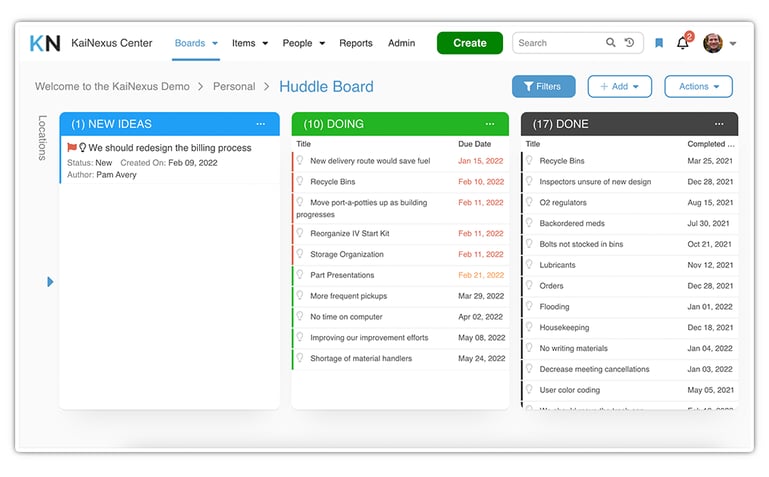 Has your organization started a quality improvement program with great fanfare and a ton of enthusiasm only to see it peter out over time? If so, you are not alone. Starting down the path to continuous improvement is easy. Sustaining momentum is not.
Has your organization started a quality improvement program with great fanfare and a ton of enthusiasm only to see it peter out over time? If so, you are not alone. Starting down the path to continuous improvement is easy. Sustaining momentum is not.
This post examines some of the most common reasons that CI programs go off the rails and how you can avoid or recover from them.
Competing Priorities and Short-Term Thinking
When organizations roll out a continuous improvement program, they generally do it on top of all of the other activities that people are already doing. Rarely are other things moved off employees' plates to make room for CQI. It's not surprising that people revert to the old way of working and thinking, as short-term requirements seem far more urgent than the bigger picture.
To avoid this problem, it is essential to find ways to bring improvement work to the top of mind. That doesn't mean that daily tasks should be neglected, but people need to be taught how to address processes on more than one level. Ideally, your team will think about what they need to do to accomplish what needs to happen today, while at the same time considering how the process could be better in the future.
Huddle meetings where improvement projects are discussed are constructive for bringing CQI to the forefront. Improvement software that includes notifications and alerts to ensure that people are reminded about CQI work is also beneficial.

Misaligned Goals
If your improvement progress is faltering, it is a good idea to examine how the performance of individual employees is measured. It is common to find that the way each team member is evaluated has nothing to do with the overall goals and objectives of the organization. In this situation, individual decision making will be out of sync with critical objectives, and a clear path to success can not be expected.
This can be addressed with strategy deployment. The game-changing objectives of the organization are crafted, and each must-achieve goal is cascaded from the executive level through each department, team, and employee. Every person has a clear vision about how their work relates to the strategy, and employee performance is evaluated in this light.
Fear of Failure
The impact of company culture on the success of quality improvement programs can not be understated. By asking people to identify opportunities for improvement and make changes to processes, you are asking them to take a risk. In some organizations, risk-taking is not safe. The fear of failure will override any desire to try something new.
Organizations with a culture that is conducive to continuous improvement accept that some experiments with change will fail. They don't blame employees when this happens. In fact, they embrace the idea that it is good to "fail forward." Each attempt at improvement results in valuable learning if nothing else.
Lack of Commitment and Resources
Key objectives of quality improvement programs are reducing waste and becoming more efficient. Achieving this usually requires the commitment of time, and sometimes budget in the short term. In organizations without strong executive support, these resources are lacking, and employees with the best of intentions can quickly become frustrated.
Budgets are values statements. If improvement projects and the tools needed to support them aren't funded, that is an indication that the work is not a high priority. That's not to say that all improvements are expensive, many don't require any expense at all. But providing the necessary support and funding for improvement is the best way to signal that CQI is a priority.
Ineffective Measurement
People get excited about CQI when they see tangible proof of its impact. This excitement leads to more engagement and is the key to sustained improvement. That means that it is essential to measure how each improvement project is impacting key metrics in the short and long term.
Improvement management software makes this much more manageable and helps keep everyone informed about how your team is progressing toward their goals. People should be able to assess the impact of improvement in terms of reduced waste, increased productivity, reduced defects, improved customer satisfaction, and other key indicators in your business.
If your quality improvement program has stalled out, it's not time to start the blame game. Instead, try looking into each of these potential issues to identify possible causes and solutions. When it comes to CQI, there are a lot of moving parts, so don't give up. Dig in!




Add a Comment